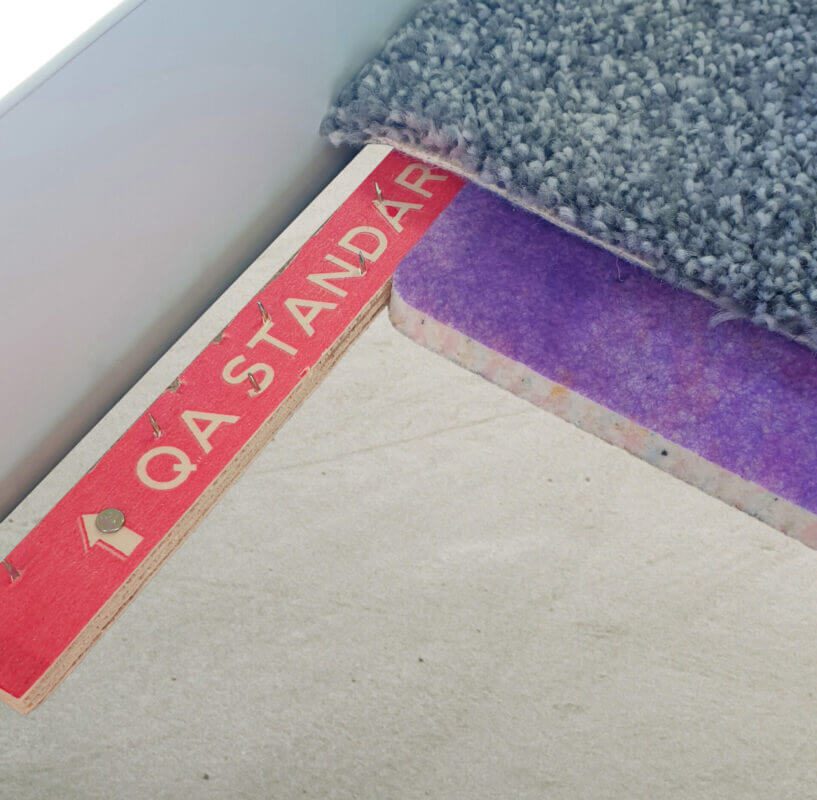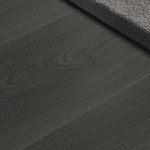Blog
How thick is Carpet Underlay?

Carpets are considered the most comfortable flooring option on the market, but they don’t come without their downsides. Luckily, the unsung hero of the flooring industry, underlays, are available to add additional bonuses to a carpet, making it less vulnerable, and even more comfortable.
But how thick are the underlays? How much does thickness matter, and can underlay thickness for carpets be too much? In this blog, we will explore each of these questions, so that you can make an informed purchase that will allow you to unlock the true potential of your new carpet.
What does a thick underlay bring to the carpet?
Before we calculate carpet and underlay thickness, you have to understand why thickness is important to begin with:
- Comfort – Carpet underlay thickness often lends to the underfoot comfort of the carpet itself. A thick underlay provides a cushioning effect underfoot that not only improves how soft the floor feels but also irons out any imperfections by filling and smoothing them out.
- Durability – A thick underlay is a strong underlay. They can extend the life of the carpet by absorbing impact that would otherwise be felt by the carpet. That being said, note that the underlay itself will suffer wear over time, reducing its durability the longer you use it.
- Insulation – A thick carpet underlay can provide high levels of sound and heat insulation, meaning your room will lose less heat and less noise will be emitted through the floor.
How thick should the carpet underlay be?
The question of what your carpet underlay thickness measurement should be depends on the following factors.
Rooms
Each room has two things that factor into the recommended thickness of a carpet underlay.
- Room Use
- Foot traffic
When choosing the right thickness of underlay for your carpet, you have to understand what the room in question is used for, and how many people will be going through it. A pretty easy way to understand this is – if there isn’t constant traffic going through the area, then a thick underlay may be viable, as thick underlays aren’t often suited to high traffic areas.
Thickness is not what fends off damage, but rather density. Underlays such as crumb rubber or felt rubber underlays might be a bit harder than a luxury carpet underlay but it’s hard-wearing – making it perfect for high foot traffic areas.
For example, the bedrooms of a home are the correct place for a plush, thick underlay that cannot handle high foot traffic. This is because this is where you can have the maximum underfoot comfort without needing to worry about durability. You cannot say the same for the hallways and stairs, as these areas are going to have people passing through often, reducing the thickness and quality of the underlay far quicker.
Carpet Type
A big part of the reason why carpet underlay thicknesses are not universal in size is that there are carpets of several different types.
- Woven Carpets – This carpet is made up of tightly woven patterns of a variety of materials, usually wool, but often a blend of wool. Nonetheless, a woven carpet is fairly fragile. The best carpet underlay for a woven carpet would be one that is dense, ensuring that the weave keeps its integrity.
- Tufted Carpets – Tufted carpets are made by inserting tufts of thread into a base material. This makes them less fragile than other carpets and thus makes them able to be paired with a wide variety of underlays, as the carpet itself is unlikely to take much wear and tear outside of high-traffic areas.
- Berber Carpets – Berber carpets are made through looped construction, and as such, are quite fragile to many elements, and that includes underlay thickness. A thick underlay can cause the loops within Berber carpets to become worn much easier because the loops within can be crushed. It’s much better to get a thin underlay, but also high density – such as crumb rubber or felt rubber underlays – here.
Essentially, you should choose your underlay types based on the type of carpet you have, shoring up its weaknesses. All of this, however, may not be noticeable with a cheap underlay – so ensure you get great value for your money by buying the industry standard.
Functionality
There are several issues concerning the possible lack of functionality that your desired thickness will bring.
Door Clearance – Having an underlay can push a carpet up with its thickness. As a result, it’s best to ensure that your underlay and carpet thicknesses do not add up to cause the carpet to protrude. Not only is this a tripping hazard, but it may even be impossible to open the door in some rooms. To account for this, measure the gap between the bottom of the door and the existing floor. The ideal gap is between 1/2 inch and 3/4 inch.
This may require either a thinner underlay or even trimming the door. Either way, you must check first, as failure to do so will make the visit from the carpet fitters rather awkward.
Conclusion
Overall, the carpet underlay thickness seen as acceptable depends entirely on your situation, your wants, and your needs. We hope this article has ironed out the dos and don’ts of selecting a carpet underlay that is right for you and allows you to understand the importance of the thickness of carpet underlay.
How thick is Carpet Underlay? – FAQs
What is the most common underlay for carpets?
Underlays made of PU Foam are the most common carpet underlay on the market. They provide the three benefits that we laid out before – heat and sound insulation, underfoot comfort and great value for a long-term investment. Since it’s made of recyclable materials, it is also budget-friendly, not to mention environmentally green.
Whilst PU Foam Underlay may be considered the standard, or perhaps even the best for a carpet underlay, understand that there are other reasons why you might consider an alternative:
- Foot Traffic – PU Foam Underlay is thick and fairly durable, but over time, it will succumb to areas of high foot traffic. Instead, keep it for areas such as the bedrooms or the dining room of your house.
- Sound and Heat Insulation – Although PU Foam Underlay performs in sound insulation, its performance cannot stand up to alternatives such as rubber, whose entire molecular structure seems naturally designed to absorb sound. They do, however, provide excellent heat insulation. This is good, but at the same time, it makes them somewhat incompatible with underfloor heating. Underfloor heating requires low thermal insulation in both the flooring itself and any underlay that is put down.
Can I get a thin underlay for my thick carpet?
Many think that thin carpet underlays typically don’t bring much to a carpet that’s thick enough to be comfortable by itself. But this isn’t true for several reasons:
- Enhanced Comfort – Thin underlays by themselves may feel no less comfortable than a thin carpet, but as supporting backing, it can take stress off of the thick carpet, making it feel more plush underfoot.
- Insulation – Thick carpets don’t necessarily mean insulated carpets. Both sound and heat insulation are more affected by molecular structure than the level of thickness of your carpet. Thin underlays can still bring amazing insulation properties to thicker carpets.
- Carpet Longevity – Perhaps the comfort of your underlay doesn’t matter because the carpet is perfect already – that’s great. But an underlay can still protect that carpet by taking most of the impact of feet, as well as possibly protecting from moisture below.

